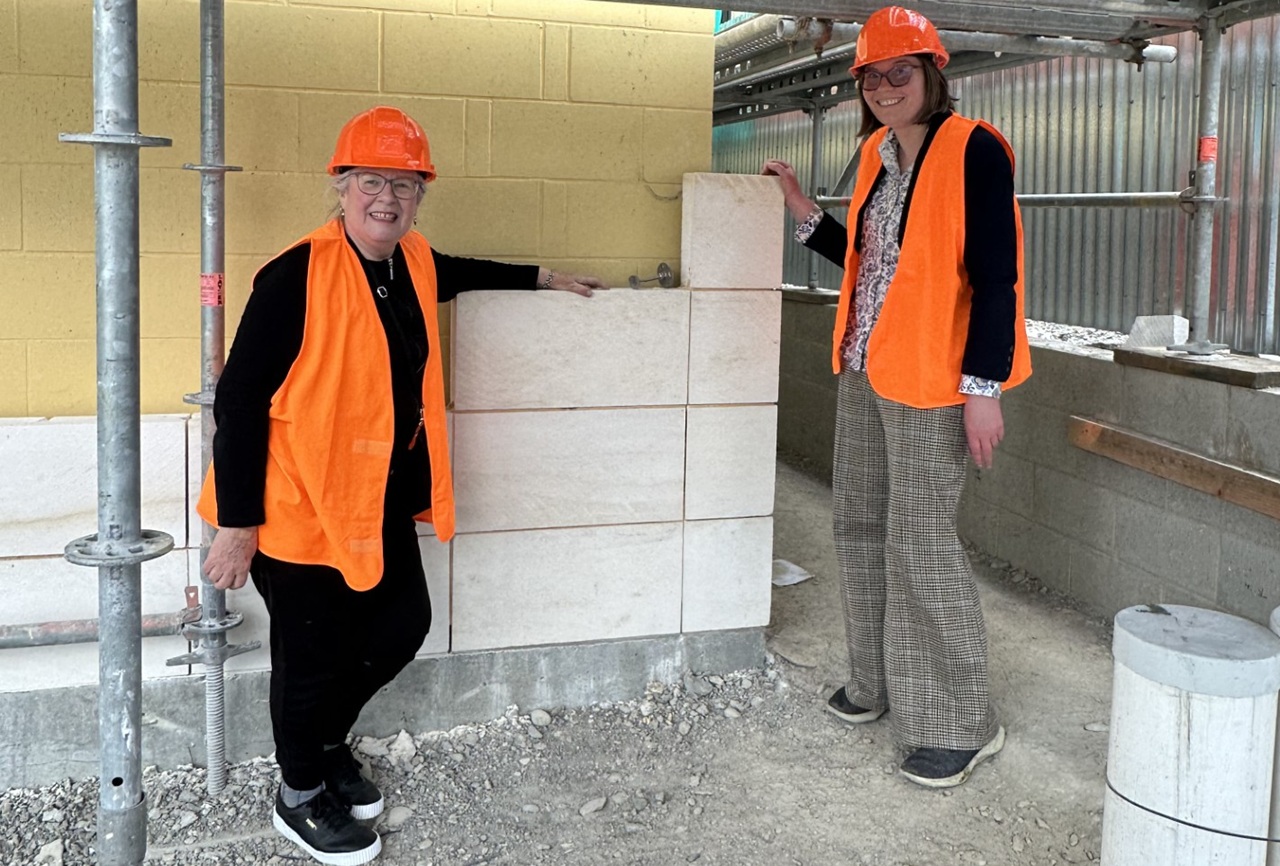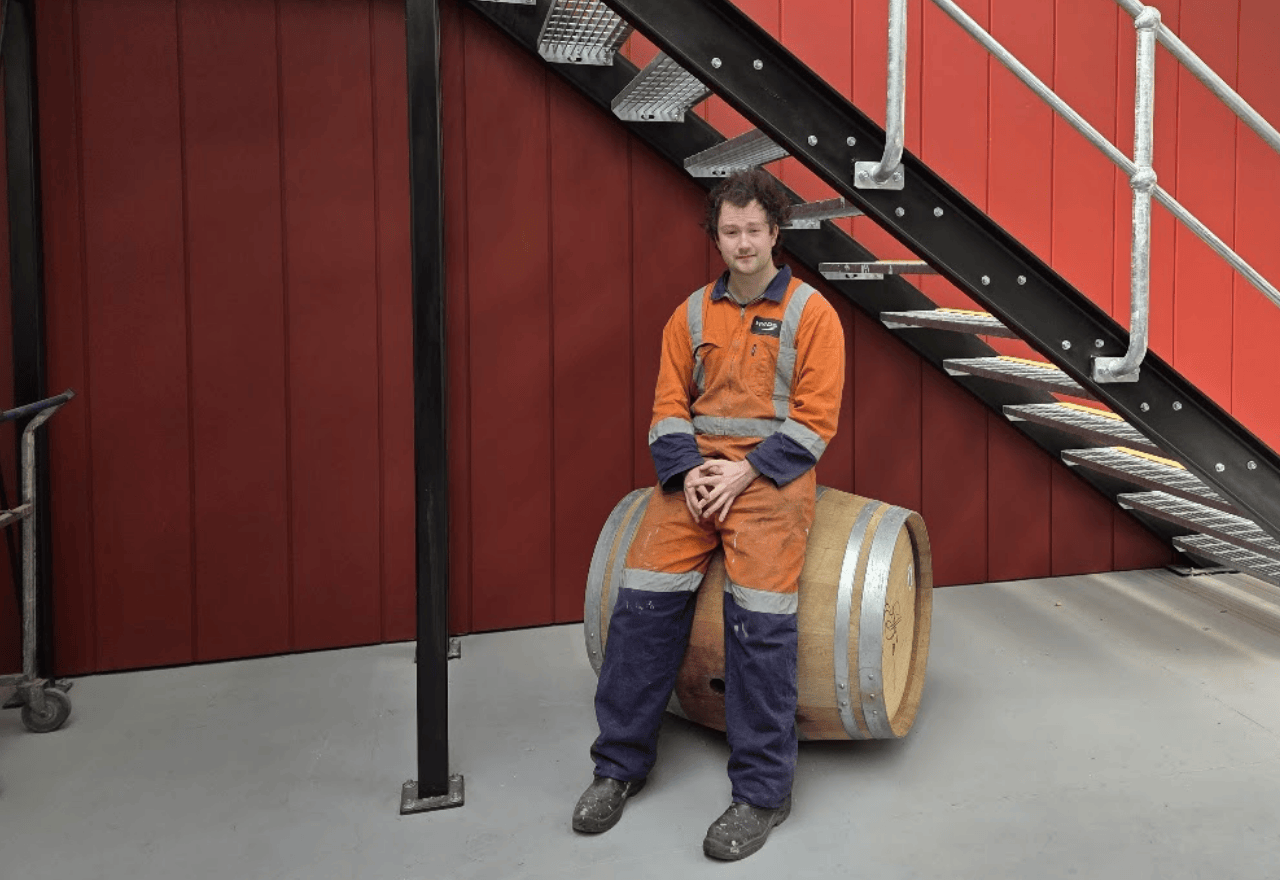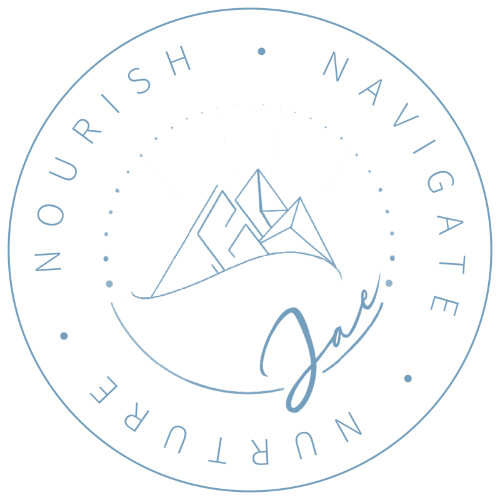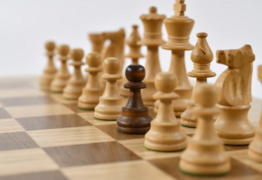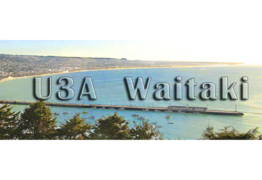Family threads and found forms: Paula Collier's artist residency
Cara Tipping Smith
13 October 2025, 4:45 AM
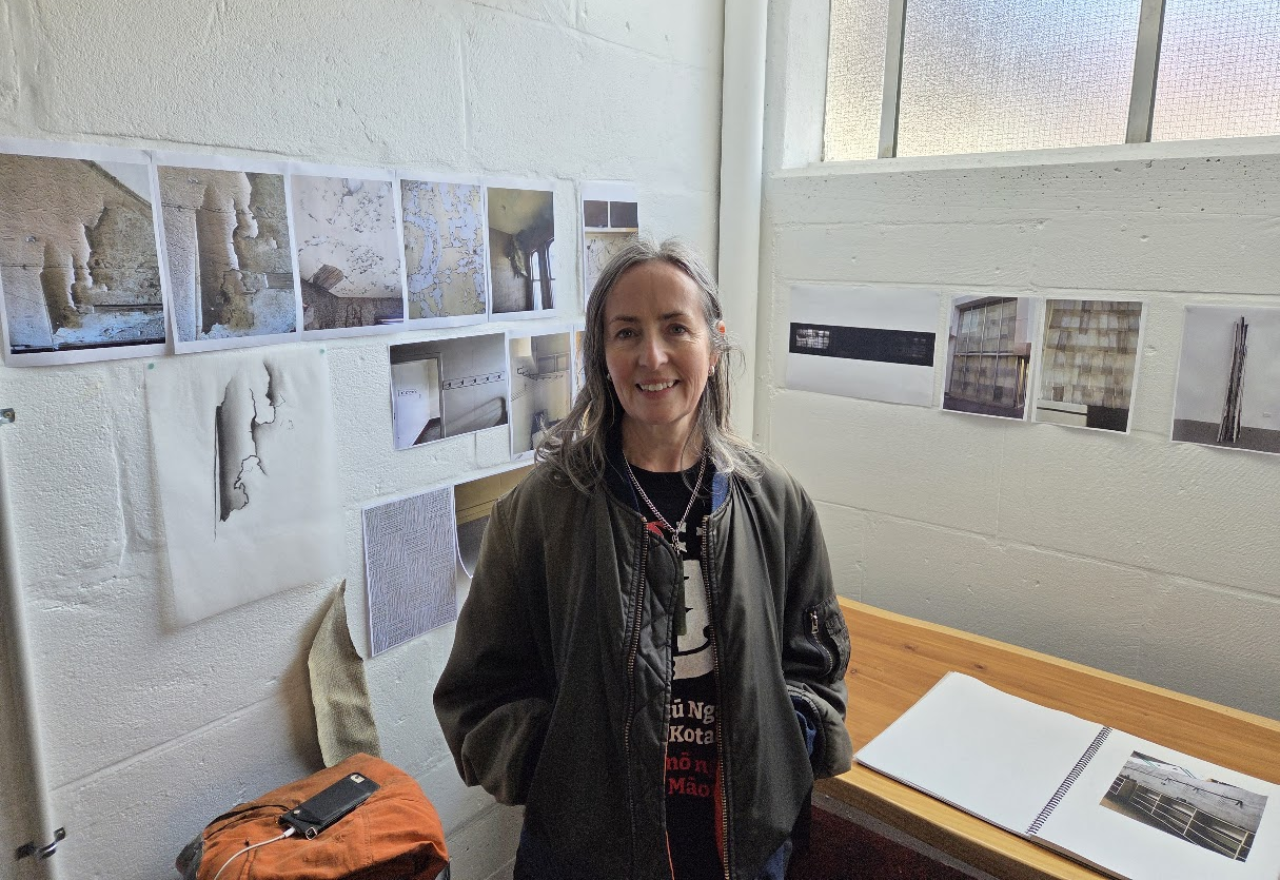 Visual artist Paula Collier in her studio at the Pattern Shop, Gillies Metaltech Foundry. Photo: Cara Tipping Smith.
Visual artist Paula Collier in her studio at the Pattern Shop, Gillies Metaltech Foundry. Photo: Cara Tipping Smith.Visual artist, Paula Collier has been discovering and weaving Ōamaru’s working histories into found sculptures and site installations since starting her Crucible Artist Residency at Gillies Metaltech, Ōamaru.
Originally from Christchurch, with family ties to Port Chalmers, one of her early intriguing finds was that her father was actually born in Ōamaru.
"He was born in what is now The Vicarage B&B, which was a maternity hospital for a bit,” she says.
With that recognition came the realisation that her grandfather, a fitter-turner and boilermaker, would have been working in the town back then.
Sitting in the Pattern Shop on Tyne Street, she says, “he would have worked in this area probably, and possibly even in this street”.
Buildings, their histories and contexts sit at the heart of Paula’s artistic practice.
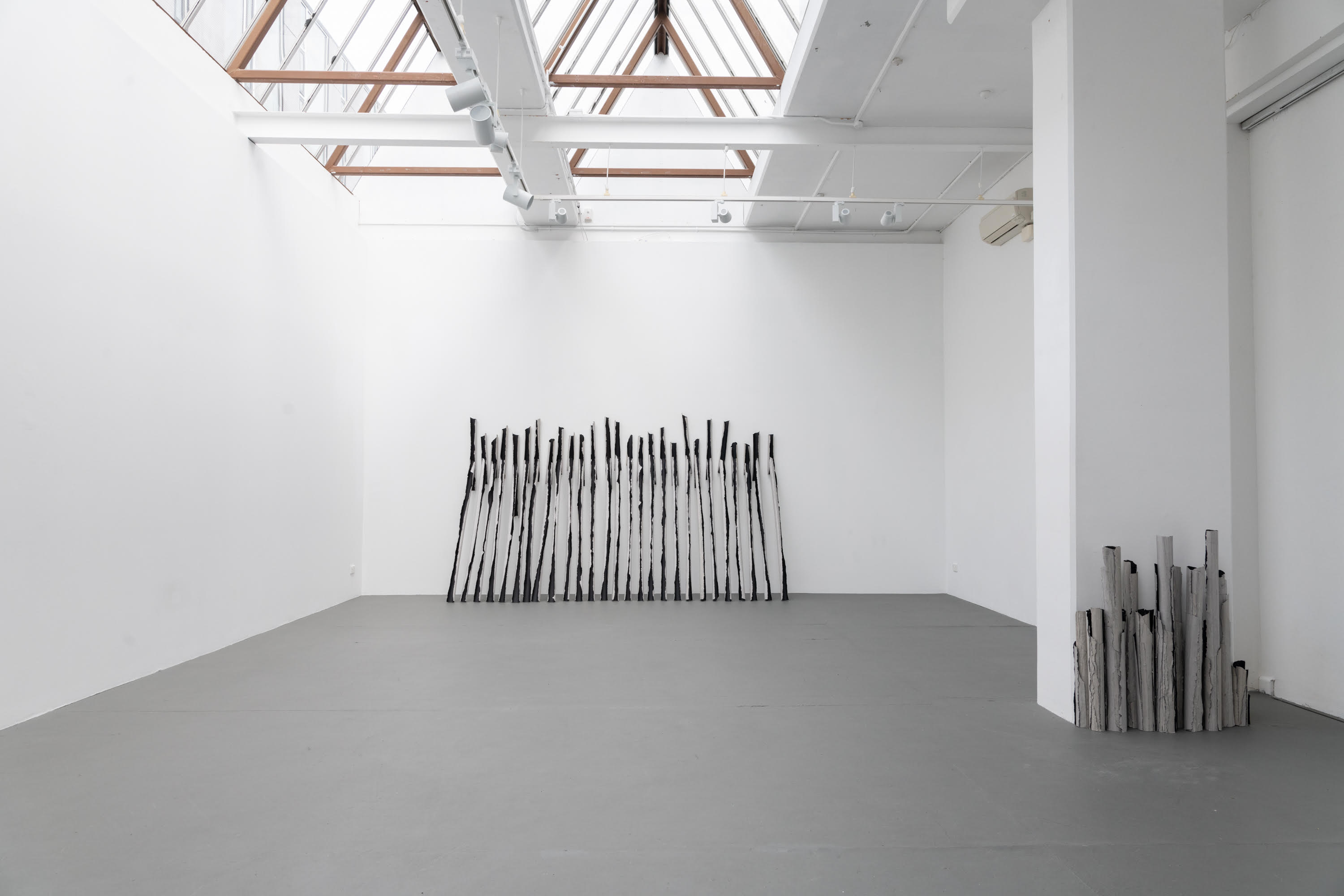
Untitled # 9, newsprint and blackwrap foil, Engine Room gallery, Massey University, 2024 by Paula Collier. Photo: Supplied.
Being based in the foundry, within the Heritage Precinct is a “dream”.
“Personally, because I’ve worked a lot in old buildings so I’ve been shown around all the other properties that are connected to this place.”
While the buildings themselves inspire her, the foundry, the people within and the evolution of their craft has captivated her.
“In its heyday it had 100 or maybe 150 people working here.
“It’s like this piece of history, you get a real sense of what was possible.”
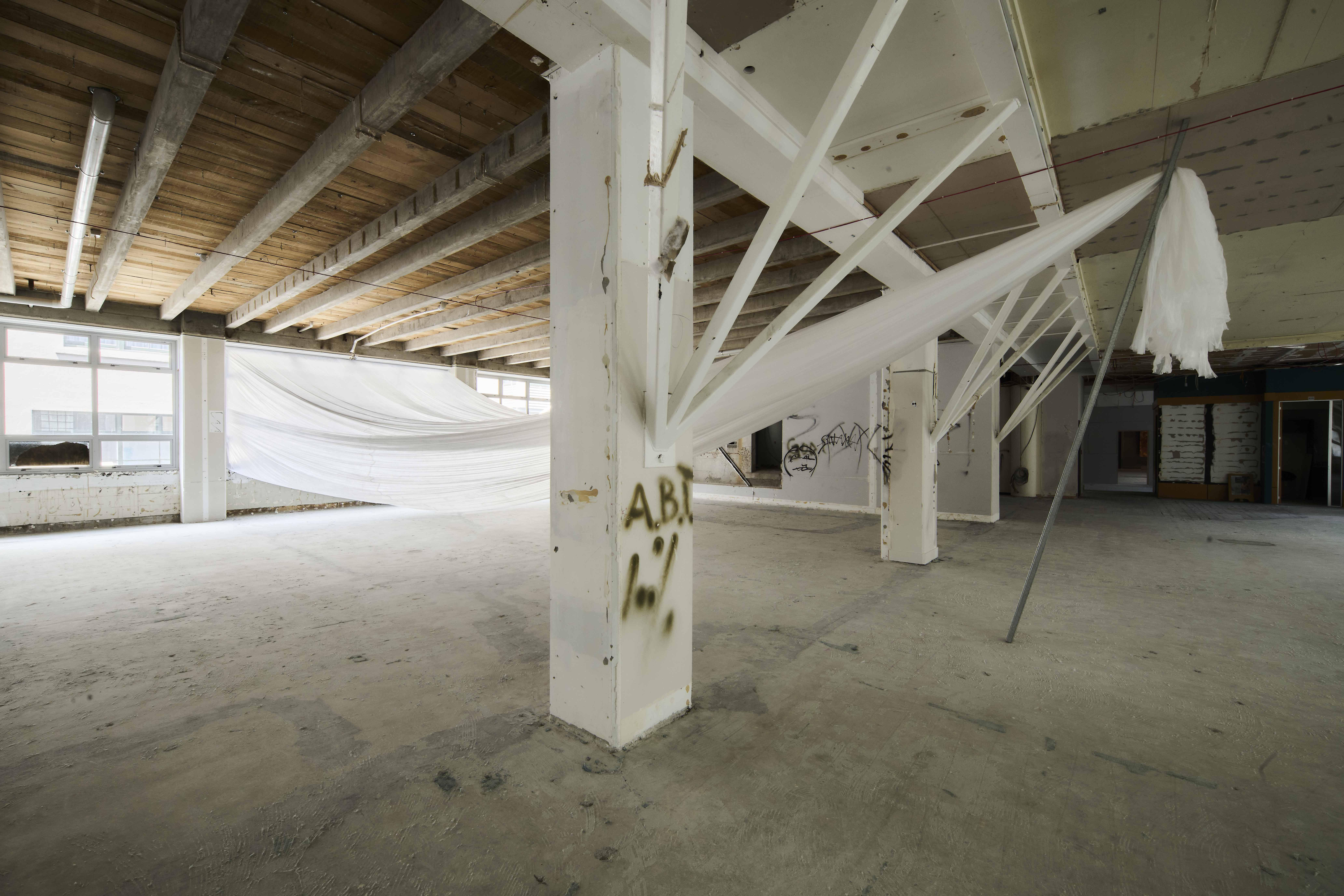
Untitled, drop cloth plastic and repurposed steel, final Masters show, Cuba St, 2024, Te Whanganui-a-Tara by Paula Collier. Photo: Supplied / A J Bain.
She says the Gillies Metaltech team is not just interested in what the resident artists are doing but are really up for the challenge - including helping her experiment with casting paper.
“When I talk to people here, there’s so much technical knowledge and science - it’s chemistry, it’s physics, it’s all those things and knowing your machinery.
“But there’s also this other factor, which is sometimes environmental, how you move with the person you’re working with when you’re doing the pour, if it’s damp, if it’s cold, if you’re in a bad mood.”
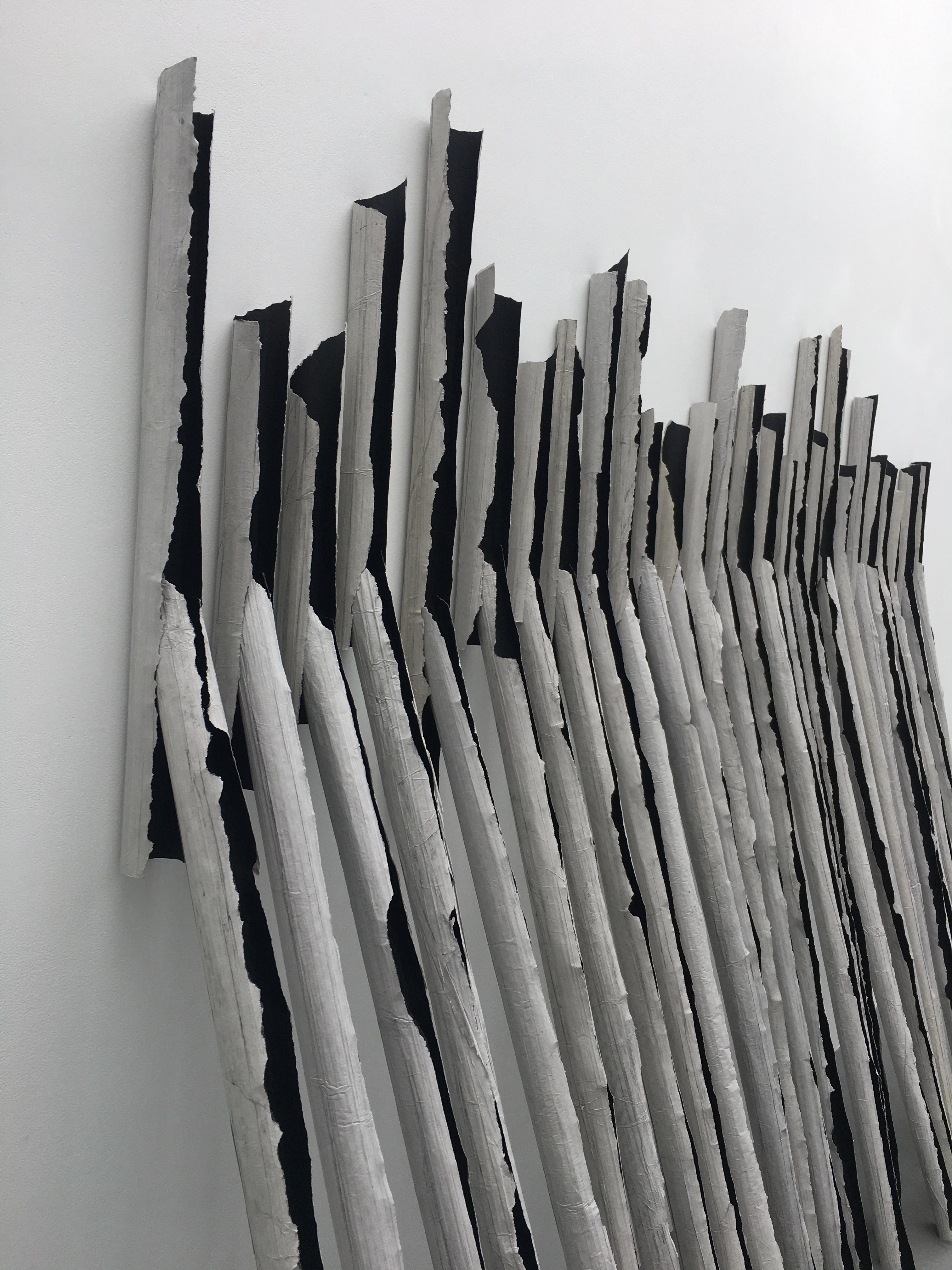
Close up of Untitled # 9. Photo: Supplied.
She points at a tall column of paper covered in tiny print.
“These are printouts from when they fire up the furnace for a pour.”
At certain points they take samples from the metal and run them through a spectrometer to check they are getting “the recipe right”.
“Some of the guys have worked in there for 35 years or more,” she says.
“That means they’ve done their job without computers, and then they’ve transitioned so they’re sort of straddling those worlds.
“Coming back to this way of working and being able to connect with people who’ve worked like that their whole lives is really special, I really respect that kind of knowledge.”
She’s been collecting duds and offcuts along with spectrometer printouts from metal tests, wafer-thin flash from a blown-out mould, test bars and lengths of strapping that curl and remember their shape.
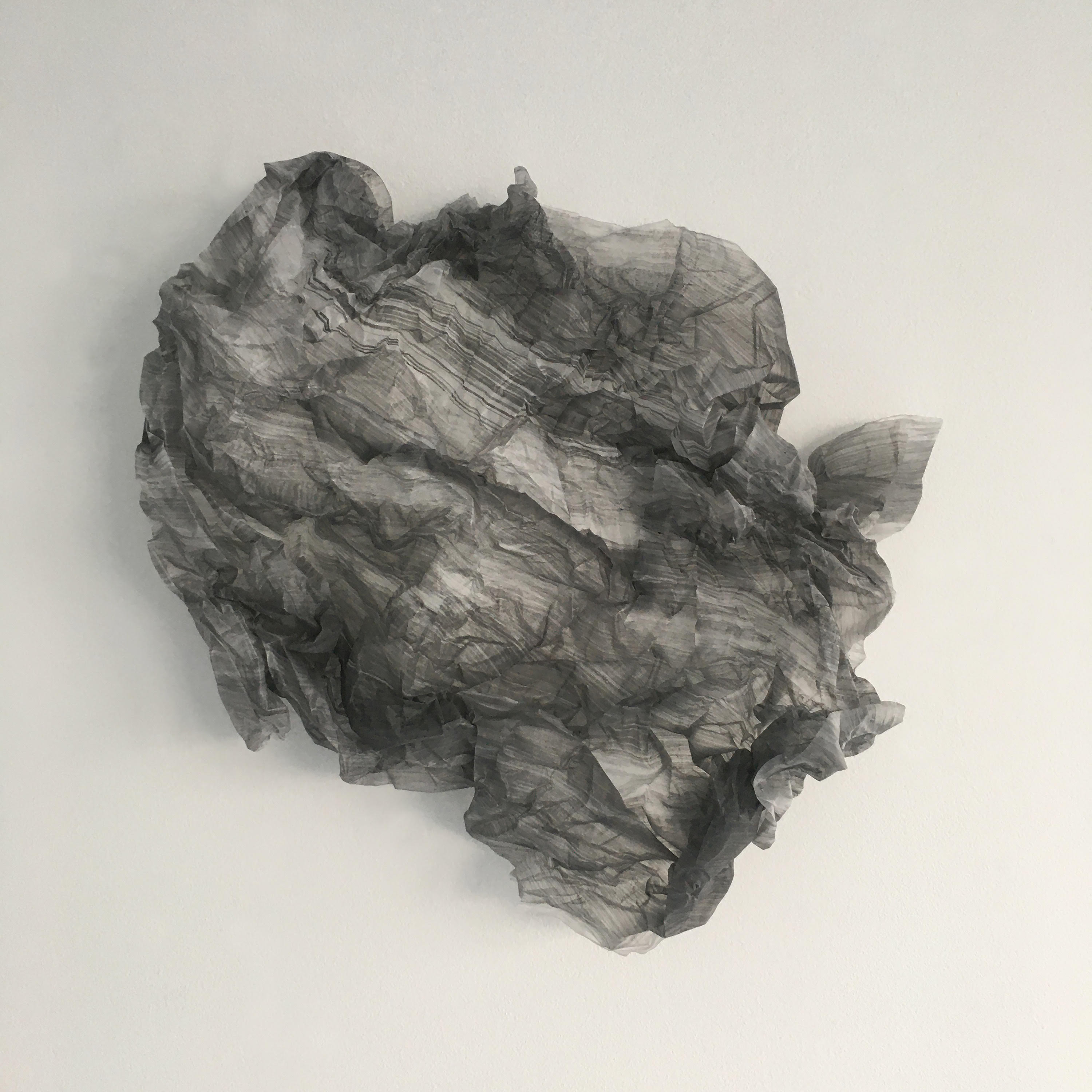
Aeon # 1 drafting paper and reflective ink, 2023 by Paula Collier. Photo: Supplied.
She’s also been drawing with plumbago (graphite), once used as a dry lubricant on wartime machinery.
“I’m like a kid in a candy store.”
About her work, Paula says she tends to use a lot of found materials.
“I have a real fascination with materials that are maybe not very valuable, that are discarded, maybe from industry.
“It’s more about the context of those materials, but also inherently what sculpturally happens to them if I put them in a different space or a different location.”
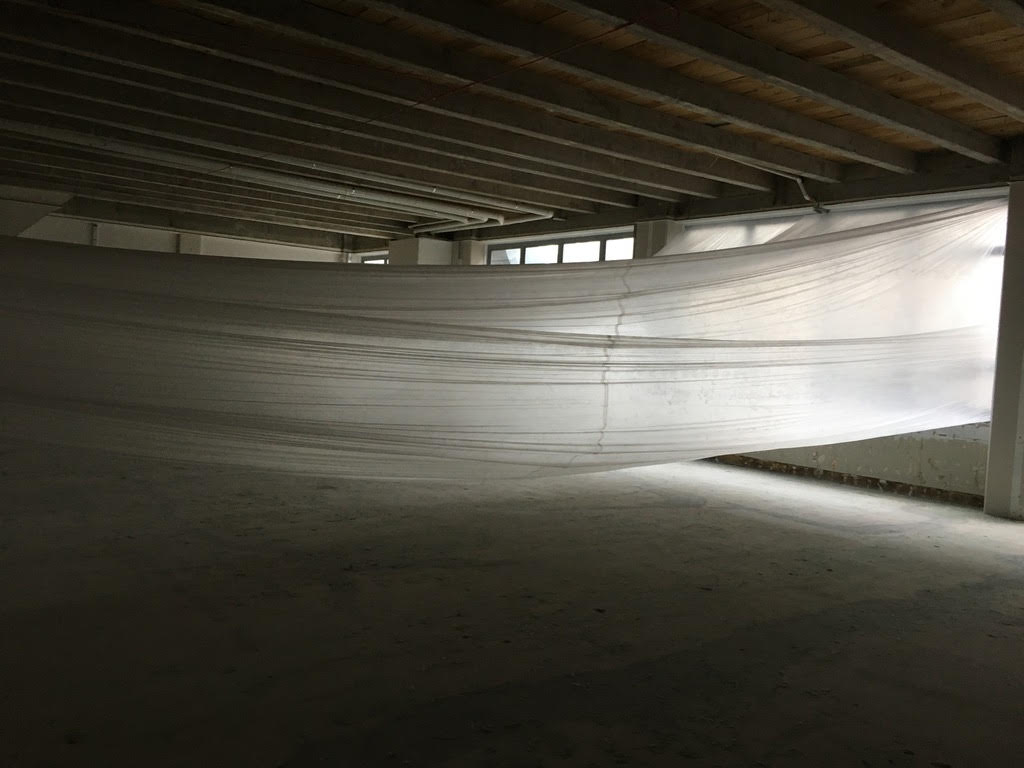
Detailed view of Untitled, drop cloth plastic and repurposed steel, final Masters show, Cuba St, 2024, Te Whanganui-a-Tara by Paula Collier. Photo: Supplied.
She treats buildings in the same way.
“Like a repurposed material because they’ve got a real residue of use, in the sense of history.”
“I’m often working with balance and precarity and connecting with the building that it’s in,” she says.
"It doesn’t exist without the building.”
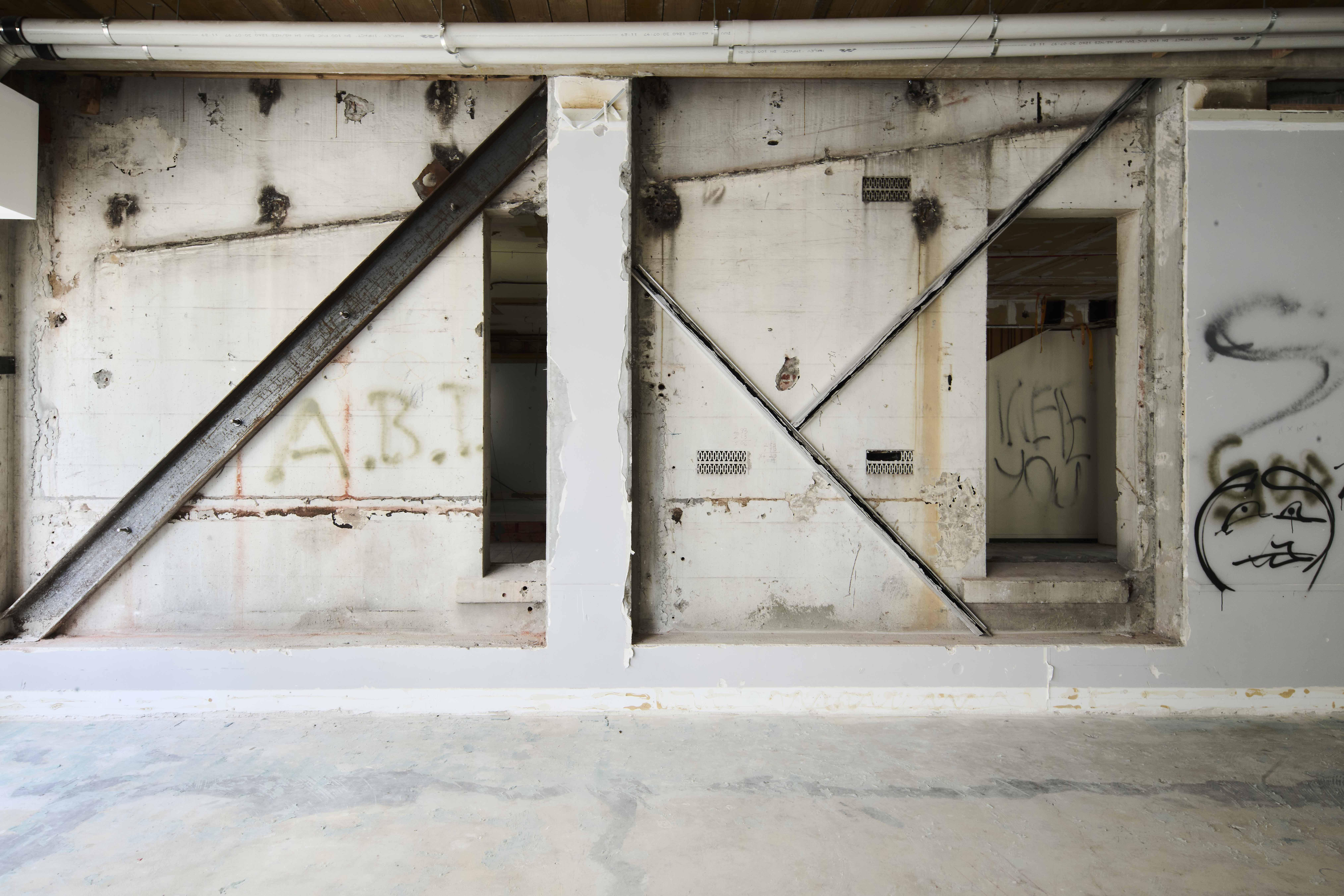
Untitled, newsprint, blackwrap foil and repurposed aluminium, final Masters show, Cuba St, 2024, Te Whanganui-a-Tara by Paula Collier. Photo: Supplied / A J Bain.
One of those buildings is on Tees Street where Paula has been quietly exploring installation possibilities - balancing inner tubes on hooks found in situ, reconfiguring chopped metal cages, stamping an ancient wallpaper pattern with an old fireplace tile into decades-old dust on the carpet.
She knows that the three-month residency won’t be enough to complete all her ideas, but what begins here will continue.
“It’s going to connect to a body of work in the future.
“I can always work with the foundry and they’re interested in doing that more,” she says.
“They’ve worked with some artists recently, creating sculptures.”
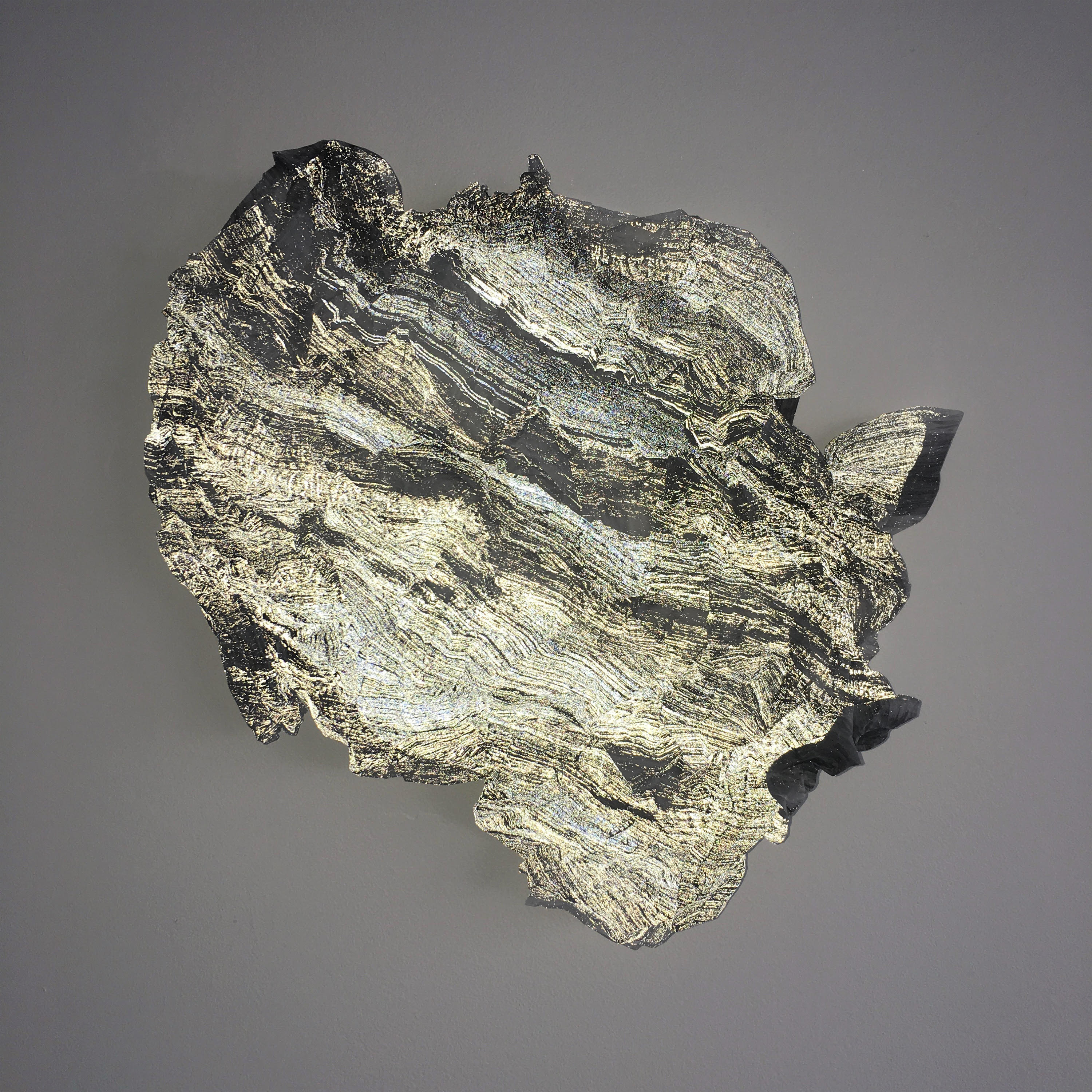
Aeon # 2 drafting paper and reflective ink, 2023 by Paula Collier. Photo: Supplied.
For now, the work lives where Ōamaru’s layers meet - in the lines of graphite dust, the echo between a rubber rib and a metal stripe, the shine of a cast lath set back into a derelict stairwell, and the stories of a town that made things and still does.
“Because I’m here at a residency, there’s an exhibition at the end.
“I will have work, my process will get me there.”
NEWS
TEAM MEET-UPS | LOCAL CLUBS & GROUPS CALENDAR
